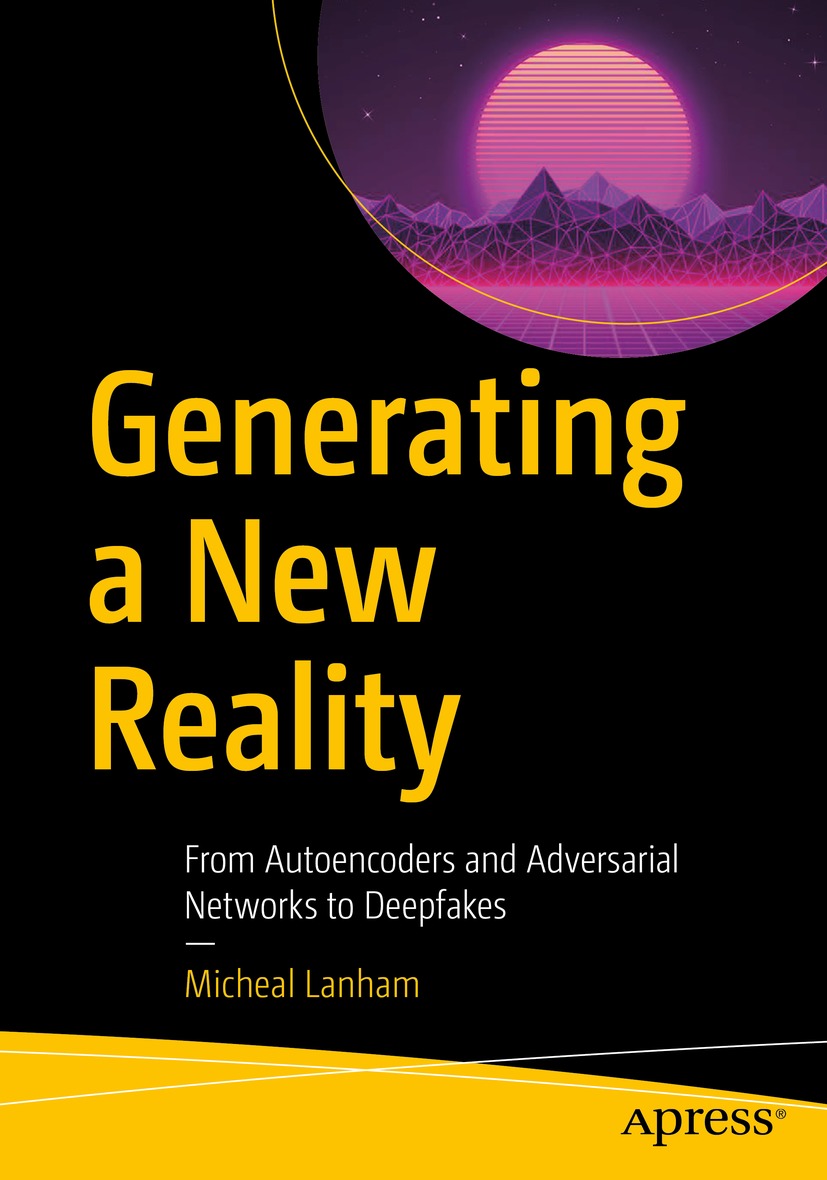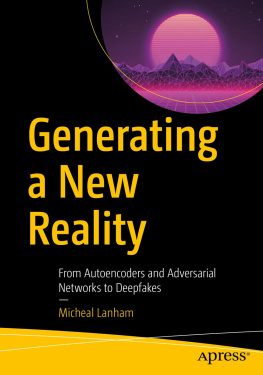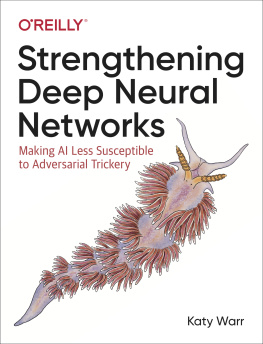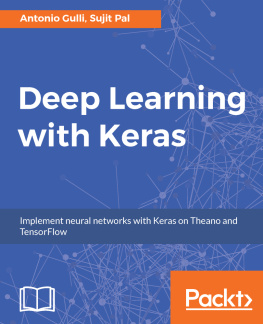Micheal Lanham - From Autoencoders and Adversarial Networks to Deepfakes
Here you can read online Micheal Lanham - From Autoencoders and Adversarial Networks to Deepfakes full text of the book (entire story) in english for free. Download pdf and epub, get meaning, cover and reviews about this ebook. year: 2021, publisher: Apress, genre: Children. Description of the work, (preface) as well as reviews are available. Best literature library LitArk.com created for fans of good reading and offers a wide selection of genres:
Romance novel
Science fiction
Adventure
Detective
Science
History
Home and family
Prose
Art
Politics
Computer
Non-fiction
Religion
Business
Children
Humor
Choose a favorite category and find really read worthwhile books. Enjoy immersion in the world of imagination, feel the emotions of the characters or learn something new for yourself, make an fascinating discovery.
- Book:From Autoencoders and Adversarial Networks to Deepfakes
- Author:
- Publisher:Apress
- Genre:
- Year:2021
- Rating:4 / 5
- Favourites:Add to favourites
- Your mark:
- 80
- 1
- 2
- 3
- 4
- 5
From Autoencoders and Adversarial Networks to Deepfakes: summary, description and annotation
We offer to read an annotation, description, summary or preface (depends on what the author of the book "From Autoencoders and Adversarial Networks to Deepfakes" wrote himself). If you haven't found the necessary information about the book — write in the comments, we will try to find it.
From Autoencoders and Adversarial Networks to Deepfakes — read online for free the complete book (whole text) full work
Below is the text of the book, divided by pages. System saving the place of the last page read, allows you to conveniently read the book "From Autoencoders and Adversarial Networks to Deepfakes" online for free, without having to search again every time where you left off. Put a bookmark, and you can go to the page where you finished reading at any time.
Font size:
Interval:
Bookmark:


This Apress imprint is published by the registered company APress Media, LLC part of Springer Nature.
The registered company address is: 1 New York Plaza, New York, NY 10004, U.S.A.
To my true loves: knowledge, my children, and Rhonda.
We live in an era of fake news and uncertain reality. Its a world where reality has become blurred by digital wizardry artists and artificial intelligence practitioners. Its a digital reality now populated with fake news, images, and people. For many, the uncertainty and confusion are overwhelming. Yet, others, like yourself, search to embrace this new era of digital fakery to explore new opportunities.
This book takes an in-depth look at the technology that powers this new digital fake reality. The broad name for this technology or form of AI/ML is generative modeling (GM). It is a form of AI/ML modeling that looks to understand what something represents, as opposed to other forms of modeling that look to classify or predict something.
Generative modeling is not a new concept, but one that has emerged from the application of deep learning. The introduction of deep learning has launched the field into the mainstream. Unfortunately, not all mainstream use of GM is flattering or showcases the power of this diverse technology.
There is a real and speculated fear for most outside and inside the field of GM on what is possible. For many, the application of GM to produce fake anything is abhorrent and nonessential, but the broad applications GM introduces can benefit many industries across many tasks.
In this book, we begin with the assumption you have limited or little knowledge of deep learning and generative modeling. You have a basic knowledge of programming Python and applying data science, including the typical fundamental math knowledge in calculus, linear algebra, and statistics used in data science.
The Basics of Deep Learning: We begin by introducing the basic concepts of deep learning, autoencoders, and how to build simple models with PyTorch. The examples in this chapter demonstrate simple concepts we will apply throughout this book and should not be missed by newcomers.
Unleashing Generative Adversarial Networks: This chapter moves to the fundamentals of explaining the generative adversarial network (GAN) and how it can be used to generate new and novel content. Examples in this chapter explore the applications of GANs from generating fashion to faces.
Exploring the Latent Space: Fundamental to generative modeling is the concept of learning the latent or hidden representation of something. In this chapter, we explore how the latent space is defined and how we can better control it through hyperparameters, loss function, and network configuration.
GANs, GANs, and More GANs: This book explores several variations of GANs, and in this chapter we look at five forms that attempt to learn the latent space differently. We build on knowledge from previous chapters to explore key differences in the way GANs learn and generate content.
Image to Image Content Generation: This chapter covers the advanced application of GANs to enhance the generation of content by learning through understanding translations. The examples in this chapter focus on showcasing paired and unpaired image translation using a variety of powerful GANs.
Residual Network GANs: Throughout this book we will constantly struggle with the generative ability to produce diverse and realistic features. The GANs in this chapter all use residual networks to help identify and learn more realistic feature generation.
Attention Is All We Need: This chapter explores the attention mechanism introduced into deep learning through the application of natural language processing. Attention provides a unique capability to identify and map relevant features with other features. The examples in this chapter demonstrate the power of using an attention mechanism with a GAN.
Advanced Generators: This chapter dives into the deep end and explores the current class of best-performing GANs. The examples in this chapter work from several open-source repositories that showcase how far the field of GM has come in a short time.
Deepfakes and Face Swapping: In this chapter, we switch gears and explore the application of GM for producing deepfakes. Where this whole chapter is dedicated to showcasing the ease of which you can produce a deepfake freely available open-source desktop software.
Cracking Deepfakes: From creating deepfakes and fake content for most of the book, we move on to understanding how generated content can be detected. This chapter looks at the techniques and research currently being done to expose fake content. In the future, these tools will be critical to controlling the digital reality we embrace and understanding what is real.
This book covers a wide range of complex subjects presented in a practical hands-on and technically friendly manner. To get the most out of this book, it is recommended that you engage and work with several of the 40+ examples. All the examples in this book have been tested and run to completion using Google Colab, the recommended platform for this book. While some examples in this book may take up to days to train, most can be run in under an hour.
Font size:
Interval:
Bookmark:
Similar books «From Autoencoders and Adversarial Networks to Deepfakes»
Look at similar books to From Autoencoders and Adversarial Networks to Deepfakes. We have selected literature similar in name and meaning in the hope of providing readers with more options to find new, interesting, not yet read works.
Discussion, reviews of the book From Autoencoders and Adversarial Networks to Deepfakes and just readers' own opinions. Leave your comments, write what you think about the work, its meaning or the main characters. Specify what exactly you liked and what you didn't like, and why you think so.











